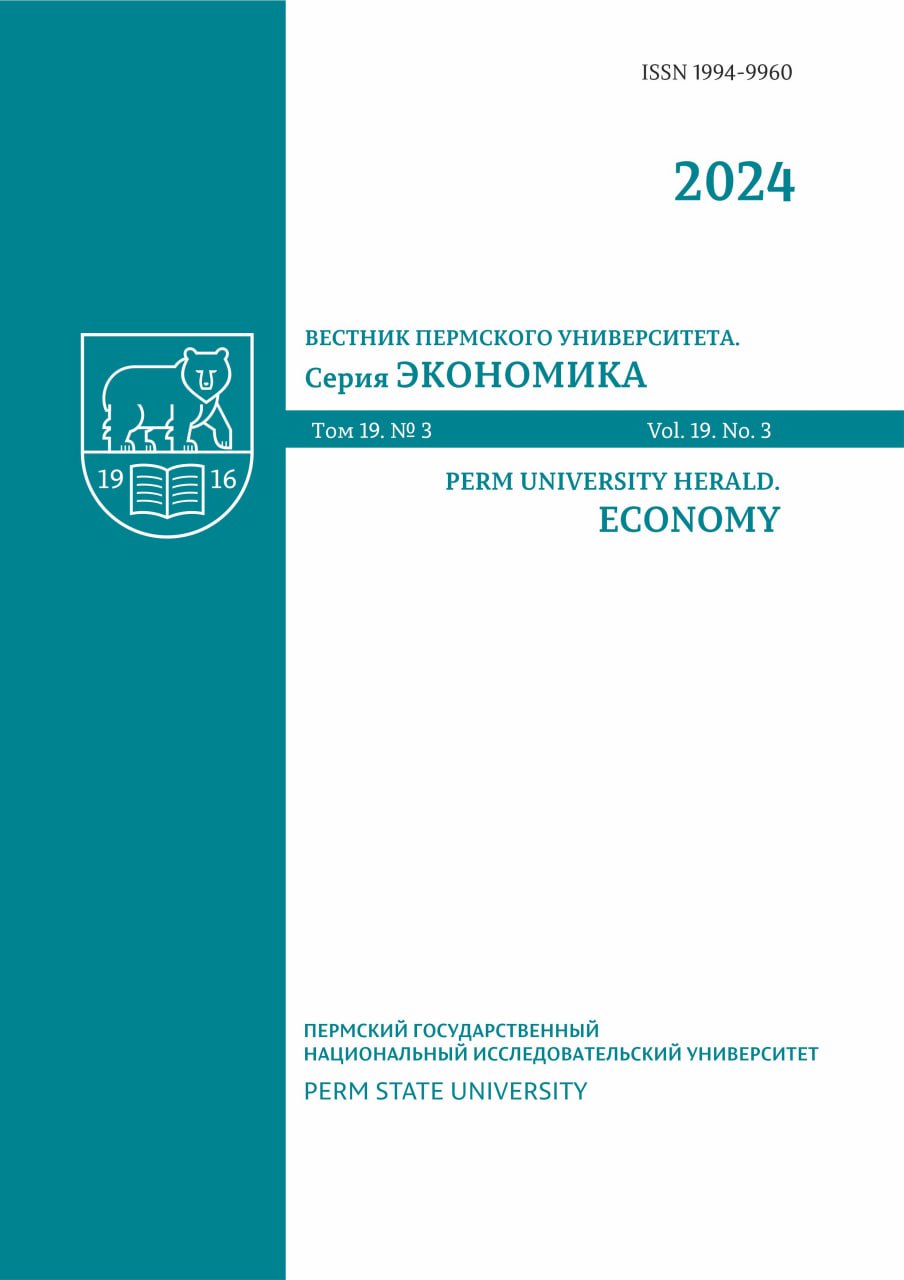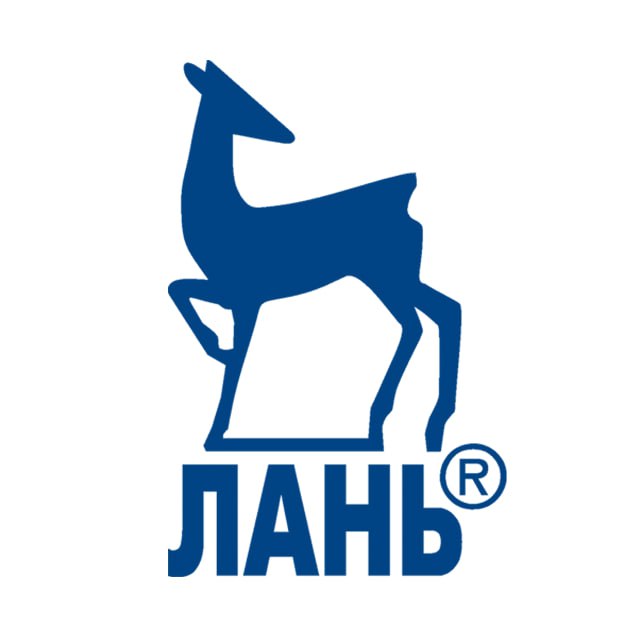On statistical modeling of random distribution of funds against various conditions
DOI:
https://doi.org/10.17072/1994-9960-2025-2-119-130Abstract
Introduction. The survey simulates a number of real financial and economic processes in their extreme manifestation of no control (randomness) with some idealization (provided initial capitals are equal, interactions are linear by their multiplicative nature, working coefficients are arbitrary chosen, etc.). Purpose. The research aims at investigating random distribution of funds within a statistical ensemble of participants with subsidized and donor regimes, when the total capital increases or decreases (the regimes are defined by two parameters of the multiplicative change in the capital). Results. Dynamics of relative distribution of capital by five groups of relative well-being is calculated. When two participants randomly meet, commercially determined models imply the transfer of a certain part of the capital from a participant with a smaller capital to a participant with a larger capital (provided the participants interact). When conditions are equal, a certain part of the capital is transferred from a participant with a large capital to a participant with a smaller capital. All regimes are found to show an initial short-term growth of the group with large capitals in the system, which is then (except for equal conditions) dominated by the group with the smallest capitals. The results illustrate that 1) if no mixing occurs, one could observe a very smooth transition to the dominance of the poorest group; this transition is slower in the donor regime and faster in the subsidized regime; 2) once the ensemble or its part interact with the environment and mix in commercial conditions in both regimes, one could observe a smooth transition to the dominance of the poorest group; 3) equal conditions give an abrupt transition to the dominance of the group with a middle-sized capital. If the ensemble’s members which have not yet interacted with the environment interact with others within a group, then both commercial and equal (somewhat stronger) conditions give a smooth transition to the dominance of the poorest group. This transition is slower in the donor regime and faster in the subsidized regime. Conclusions. At first guess, the results of this work could be used to interpret some economic elements in the national history.
Keywords: subsidized and donor mode, commercial and equal conditions, interaction with the environment, mixing
For citation
Assaul V. N., Golovin A. V., Pogodin I. E. On statistical modeling of random distribution of funds against various conditions. Perm University Herald. Economy, 2025, vol. 20, no. 2, pp. 119–130. DOI 10.17072/1994-9960-2025-2-119-130. EDN MGWQNI.
ACKNOWLEDGEMENTS
The authors would like to express their gratitude to A. I. Popova for her contribution into preparing the materials.
REFERENCES
- Voinov I. V., Pudovkin S. G., Telegin A. I. The Modeling of the Economic Systems and Processes. The Experience of the Construction of the Aris-Models. Chelyabinsk, 2002. 392 p. (In Russ.). EDN SEBZXN
- Zvyagin L. S. Practical methods of modeling of economic systems. Issues of Modern Economy: Proceedings of IV International Scientific Conference. Chelyabinsk, 2015, pp. 14–19. (In Russ.). Available at: https://clck.ru/3MZtEJ (access date 19.12.2024).
- Vlasov M. P., Shimko P. D. Modelirovanie ekonomicheskikh protsessov. Rostov-on-Don, 2005. 410 p. (In Russ.). EDN VQMEWT
- Peters O., Gell-Mann M. Evaluating gambles using dynamics. Chaos, 2016, vol. 26, Article 231003. DOI 10.1063/1.4940236
- Berman Y., Peters O., Adamou A. An empirical test of the ergodic hypothesis: Wealth distributions in the United States. SSRN, 13 Jun 2016. 40 p. DOI 10.2139/ssrn.2794830
- Peters O., Adamou A. The sum of log-normal variates in geometric Brownian motion. arXiv, 2018. 14 p. DOI 10.48550/arXiv.1802.02939
- Peters O., Adamou A. The time interpretation of expected utility theory. arXiv, 2018. 8 p. DOI 10.48550/arXiv.1801.03680
- Peters O. The ergodicity problem in economics. Nature Physics, 2019, vol. 15, pp. 1216–1221. DOI 10.1038/s41567-019-0732-0
- Meder D., Rabe F., Morville T., Madsen K. H., Koudahl M. T., Dolan R. J., Siebner H. R., Hulme O. J. Ergodicity-breaking reveals time optimal decision making in humans. arXiv, 2019. 43 p. DOI 10.48550/arXiv.1906.04652
- Bouchaut J. P., Mezard M. Wealth condensation in a simple model of economy. Physica A: Statistical Mechanics and its Applications, 2000, vol. 282, pp. 536–545. DOI 10.1016/S0378-4371(00)00205-3. EDN AFRCWN
- Frederic S., Loewenstein G., O’Donoghue T. Time discounting and time preference: A critical review. Journal of Economic Literature, 2002, vol. 40, no. 2, pp. 351–401. DOI 10.1257/jel.40.2.351. EDN EFMEPR
- Adamou A., Berman Y., Mavroyiannis D., Peters O. Microfoundations of discounting. arXiv, 2020. 28 p. DOI 10.48550/arXiv.1910.02137
- Adamou A., Peters O. Dynamics of inequality. Significance, 2016, vol. 13, iss. 3, pp. 32–35. DOI 10.1111/j.1740-9713.2016.00918.x
- Eksperiment: voznikaet li finansovoe neravenstvo pri sluchainoi razdache deneg. ITI Capital Company’s Blog. Data Visualization. 11.07.2017. (In Russ.). Available at: https://clck.ru/3MZtjE (access date 28.11.2024).
- Marsili M., Maslov S., Zhang Y. G. Dynamical optimization theory of a diversified portfolio. Physica A: Statistical Mechanics and its Applications, 1998, vol. 253, iss. 1-4, pp. 403–418. DOI 10.1016/S0378-4371(98)00075-2. EDN ORMMMX
- Peters O., Adamou A. Leverage efficiency. arXiv, 2011. 24 p. DOI 10.48550/arXiv.1101.4548
- Delvin K. The unfinished game: Pascal, Fermat, and the Seventeenth-Century Letter that Made the World Modern. Basic Books, 2010. 208 p.
- Montmort R. P. Essay d’analyse sur les jeux de hazard. American Mathematical Society, 2006. 414 p.
- Theil H. Economics and information. North-Holland Publ., 1967. 488 p.
- Kir'yanov D. V. Mathcad-15/Mathcad Prime 1.0. Saint Petersburg, 2012. 432 p. (In Russ.).











